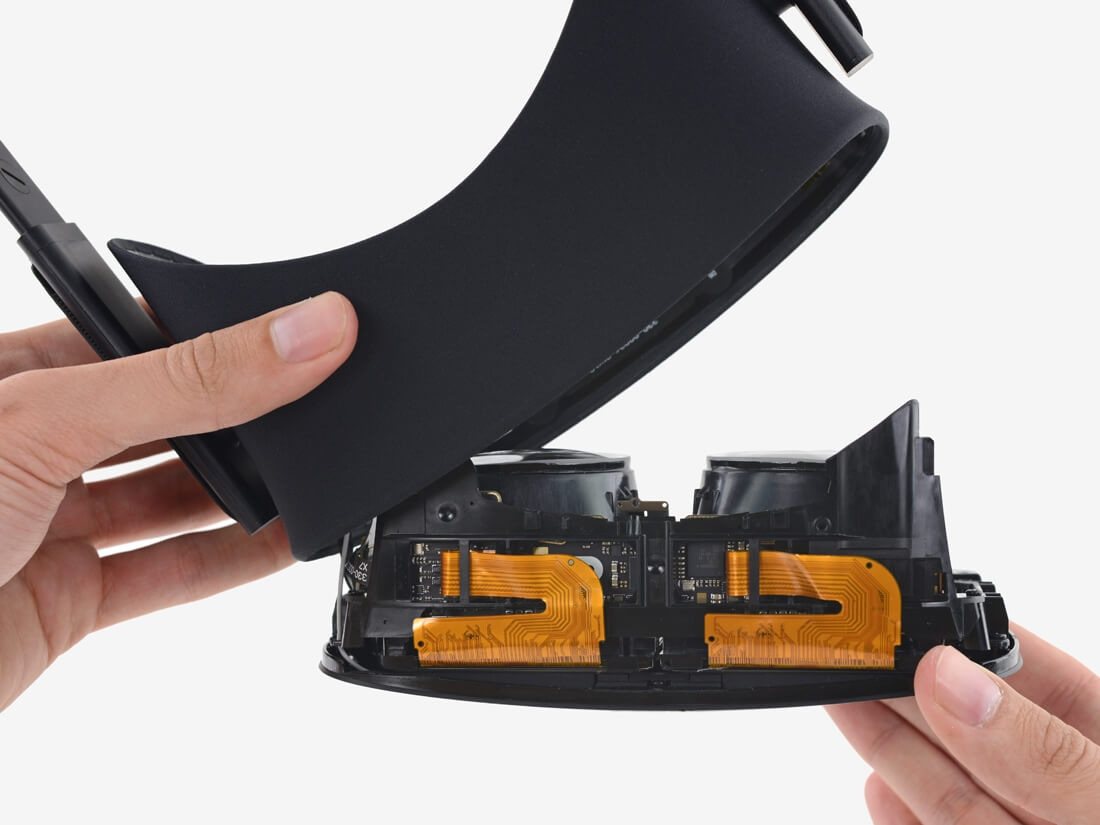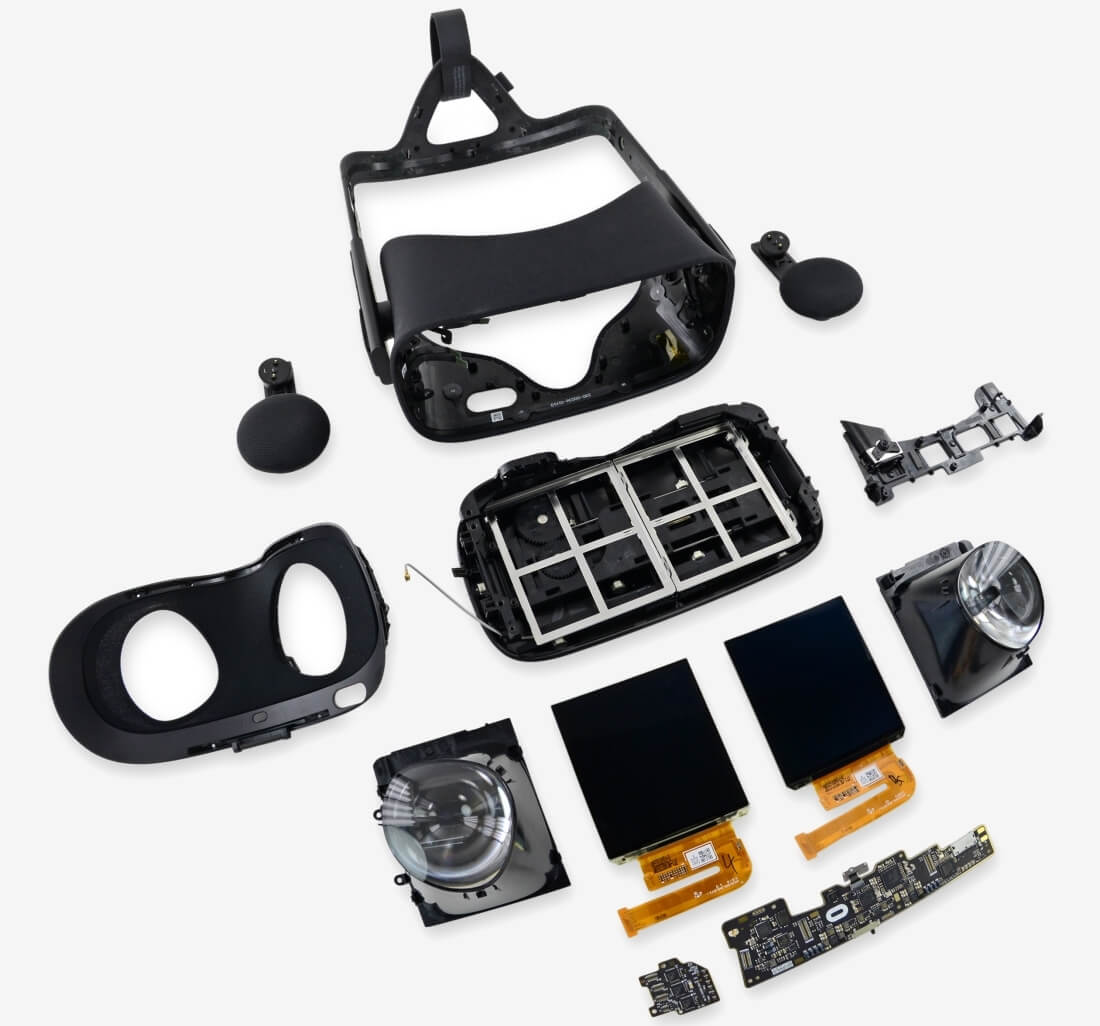The Oculus Rift launched earlier this week to much fanfare. As the first of the "true" virtual reality platforms to arrive (and the reason we're talking about them at all), the Oculus Rift has a lot riding on it. We've all seen the progression of hardware from the various developer kits to the final consumer version, but what does it look like on the inside?
Fortunately, we have the experts at iFixit to provide those answers.

The teardown specialists recently got their hands on a consumer version of the Rift and promptly got about dismantling it to see what makes it tick.
After removing the foam face padding and unplugging the single cable, some small screws were found that secure the headphones in place. Next, they encountered a stretchy lycra material covering a thin plastic frame. With this out of the way, we get our first look at the headset's innards.

The team points out that the DK2 prototype used a single 1080p panel from Samsung's Galaxy Note 3 but the consumer version includes a pair of displays. The cowling was removed next which revealed some standard-issue ribbon cables, the control board for the IR LED array and the system's main board.
Each screen's OLED measures in at 90mm which, combined, results in a pixel density of ~456 PPI. To put that into perspective, the screen on the iPhone 6s Plus checks in at 401 PPI while the new Galaxy S7 is much higher at 576 PPI.

Also new with the consumer version are non-removable, asymmetric lenses that are thinner and weigh much less than their predecessors while performing the same job.
All said and done, iFixit awarded the Oculus Rift a repairability score of seven out of 10 (the higher the number, the easier it is to repair). The team praised the unit's improved cable management as well as the easily removable earpiece speakers and face pad. Getting inside the device is somewhat difficult, mostly due to the hidden internal clips securing the dust shield.
Unfortunately, replacing the head strap is impossible without cutting through the fabric on the headset. What's more, the Rift's intricate internal design makes it very difficult to remove the lenses, displays and motherboard.
